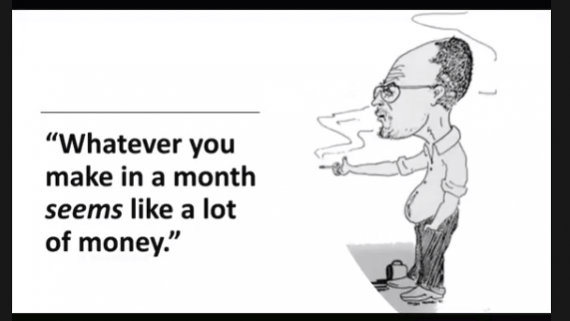Stop salespeople from naming everything a “call” and start counting the things that count.
Quit Making Calls. Start Doing This Now.
“Quit making calls.”
Not the sort of sales advice you expect from a book that purports to tell you how to sell more. But it’s sound advice. I vividly recall the day I came to that conclusion.
I had been retained as a sales consultant for a firm that needed one. I asked to see the systems and tools already in place so I could understand the process already in place.
“Here are the call (that word again) reports for last week. My salespeople are making a lot of calls but they’re not closing anything,” the sales manager said with concern. “Maybe I should make them make more calls.”
Although making more calls seems to be a reasonable solution to any sales problem, many misguided sales managers mistake a flurry of activity for real productivity.
After reading several of the reports the sales manager had received, I came to this entry:
The sales rep had entered this description of his latest meeting with a prospect. It read, “Stopped by XYZ Company. Ed (the contact) was out. He was having lunch with a vendor at Happy Joe’s Pizza. Will call again tomorrow.”
I read it again in disbelief. I wondered, why document something that did nothing to advance the sales process?
When I asked the salesperson why he had taken the time to document what clearly was a wasted effort, he said, “We are required to make a minimum of five calls a day and that was one of them.” By calling everything he did a call, he was fooling himself and his manager into thinking he was doing his job.
Another salesperson in this same company had entered into her call report, “Dropped off coffee mug as a gift.” Chalk up another “call.” Only four more to go and she could go home feeling good about how hard she worked. (Or could she?)
See what I mean about the quality of the interaction?
That was the beginning of my crusade to get salespeople to call what they do what it is. When all you have to measure is the number of “calls,” you get an inaccurate view of what it is you’re really doing. Making calls becomes the goal rather than making sales. When you quit counting calls, you can start counting the things that count.
When I was discussing this concept of calling what you do exactly what it is instead of a “call” with some British sales managers, they gave me a new term to consider. A salesperson in their employ had taken my admonition to heart. At a Monday morning sales meeting he reported to his manager that he had had a prospect “sighting. On Saturday, he had seen the prospect across the soccer pitch, made eye contact, and the two had waved to each other. A “sighting” is the perfect description of what happened.
Greek orator and statesman Demosthenes said, “Nothing is easier than self-deceit. For what each man wishes, that he also believes to be true.”
Counting Your Tasks as Outputs
To sell on purpose you must be brutally honest with yourself about what you are really doing. You do a lot of things to get in position to make a proposal. I like former Intel CEO Andy Grove’s idea of looking at the different tasks you perform as “outputs.” Not all of your outputs have the same value, although they might all be necessary.
Let’s look at some possible outputs and label them. Adapt these “truth in sales labeling” laws and you will never again call anything you do a sales call.
Here are seven sales outputs I recommend you start counting today:
- Seeds — the number of articles on business issues you send or fax to a customer. For every article you send to a legitimate prospect, you count one “seed.”
- Letters — any introductory letter, thank you note, or letter to clarify a point counts as one letter.
- Dials — if you dial the phone to try to reach a prospect or customer, you get one dial. Dialing the phone may or may not result in a contact, but you have to start somewhere.
- Contacts — if you accidentally (just kidding) get put through to the person you are dialing or if that person picks up his or her own extension, you get one contact. You can get a dial without a contact, but you can’t get a contact without a dial unless you are knocking on doors.
- Appointments booked — if you dial the phone, contact the person you want to talk with, and book an appointment, you get one appointment booked.
- Customer Needs Analyses conducted — if you have a meeting with a prospect that results in an exchange of information and needs, you get one Customer Needs Analysis. This could include taking a tour of your prospect’s facility.
- Proposals — if you present a solution and ask for an order for a specific amount of money, you have made one proposal.
The proposal is the most important output you can make. The first six outputs help put you in position to make the proposal.
At the end of the day, you count your outputs. Your scenario might look like this: You go to the office in the morning and send out five seeds, write two letters, dial the phone ten times, make three contacts, book one appointment. Then you leave the office and meet with three prospects. At those meetings you do two Customer Needs Analyses, and make one proposal.
You had twenty-four different outputs. You did not make twenty-four sales calls.
Pursuing is Not the Same as Engaging
To reflect today’s new selling environment, I have added an eighth output to the above list. If this new term gains traction in your career or your corporation, you will dramatically accelerate your sales.
- Scheduled Sales Conversation (SSC) — a scheduled conversation by phone, in person, or online the purpose of which is to advance the sale to the next stage in the process. A SSC must be on both the salesperson’s and the prospective buyer’s calendars.
The leading indicator of the health of your sales pipeline is the number of prospects who have you on their calendars for an SSC.
You may have to do list a mile long and you may be pursuing prospects, but that is not the same thing as engaging them. Engaged prospects have you on their calendars for a next step as opposed to information seekers who let you chase them.
The magic question is “Are you willing to work with me on a calendar basis?” This separates real prospects from information seekers.

Excerpted from The Accidental Salesperson 2nd Edition.











Comments
No comment yet.